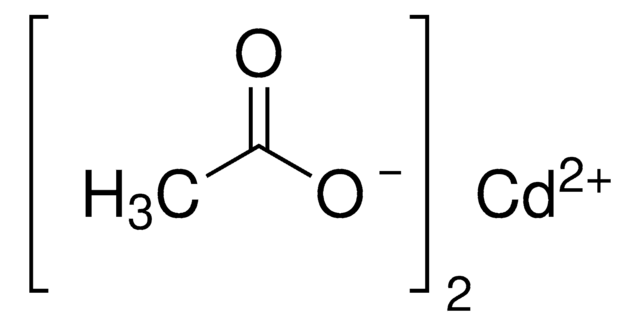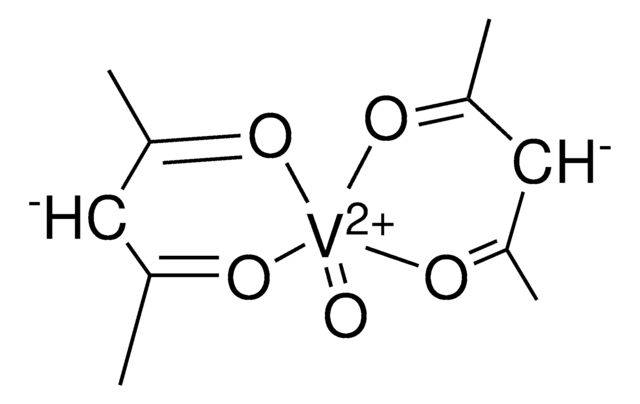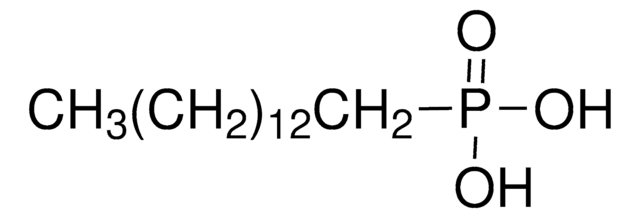755087
Cadmium(II) acetate
anhydrous, 99.995%
Synonyme(s) :
Cadmium(II) acetate, Acetic acid, cadmium salt, Bis(acetoxy)cadmium, Cadmium acetate, Cadmium diacetate, Cadmium ethanoate
About This Item
Produits recommandés
Qualité
anhydrous
Pureté
99.995%
Forme
solid
Pertinence de la réaction
core: cadmium
Caractéristiques du produit alternatif plus écologique
Design for Energy Efficiency
Learn more about the Principles of Green Chemistry.
sustainability
Greener Alternative Product
Pf
255-273 °C
Autre catégorie plus écologique
Chaîne SMILES
CC(=O)O[Cd]OC(C)=O
InChI
1S/2C2H4O2.Cd/c2*1-2(3)4;/h2*1H3,(H,3,4);/q;;+2/p-2
Clé InChI
LHQLJMJLROMYRN-UHFFFAOYSA-L
Vous recherchez des produits similaires ? Visite Guide de comparaison des produits
Description générale
Application
Mention d'avertissement
Danger
Mentions de danger
Classification des risques
Acute Tox. 4 Dermal - Acute Tox. 4 Inhalation - Acute Tox. 4 Oral - Aquatic Acute 1 - Aquatic Chronic 1 - Carc. 1B - Muta. 1B - STOT RE 1 Oral
Organes cibles
Kidney,Bone
Code de la classe de stockage
6.1C - Combustible acute toxic Cat.3 / toxic compounds or compounds which causing chronic effects
Classe de danger pour l'eau (WGK)
WGK 3
Point d'éclair (°F)
Not applicable
Point d'éclair (°C)
Not applicable
Faites votre choix parmi les versions les plus récentes :
Déjà en possession de ce produit ?
Retrouvez la documentation relative aux produits que vous avez récemment achetés dans la Bibliothèque de documents.
Les clients ont également consulté
Articles
Nanostructured Materials Through Ultrasonic Spray Pyrolysis
Nanostructured Materials Through Ultrasonic Spray Pyrolysis
Notre équipe de scientifiques dispose d'une expérience dans tous les secteurs de la recherche, notamment en sciences de la vie, science des matériaux, synthèse chimique, chromatographie, analyse et dans de nombreux autres domaines..
Contacter notre Service technique














